Our Moon is the largest moon in the Solar System relative to its parent planet. It’s thought to have been created about 4.5 billion years ago when an object a similar size to Mars called Theia crashed into Earth. The impact melted part of the Earth’s rocky mantle, which together with debris from Theia was ejected into space where it clumped together to form the Moon. The Moon is trapped in Earth orbit by the Earth’s gravity.
You’ve probably noticed that the moon seems to change shape over time. This is because the sun only lights up one side of the moon, the other side is dark. As the moon orbits the Earth, different parts of it are lit, which is why it seems to change shape. These different shapes are known as phases of the moon.
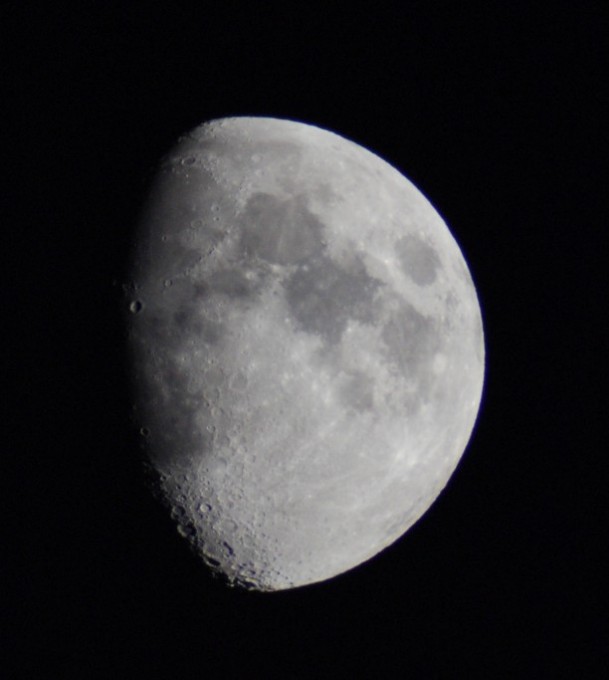
The Eight Phases of the Moon
New Moon
This is when the Moon is between the Earth and the Sun. The illuminated side faces away from the Earth, so we don’t see it.
Waxing Crescent
A small sliver of the Moon can be seen.
First Quarter
The Moon looks like a half circle. Half its illuminated side is visible.
Waxing Gibbous
More than half of the Moon can be seen. Gibbous is when more than half, but not a full Moon, can be seen.
Full Moon
The whole of the illuminated side of the Moon faces the Earth.
Waning Gibbous
The illuminated part of the Moon starts to decrease. Waning means the illuminated part is decreasing.
Last Quarter
Half the illuminated side is visible again, but the opposite side from the first quarter.
We never see the far side of the Moon from Earth.
Why can we see the Moon?
The moon itself doesn’t emit any light, what we’re actually seeing is sunlight reflected off the moon. When we see the whole of the moon, this is called a full moon. When none of the moon is lit up, this is a new moon. As we start to see more of the moon after a new moon, this is called waxing. As we see less of the moon after a full moon, we say the moon is waning.
How long does the Moon take to orbit the Earth?
The moon takes 27.32 days to orbit the Earth, during which time we see all its phases. From new Moon to New Moon, it takes 29.5 days.
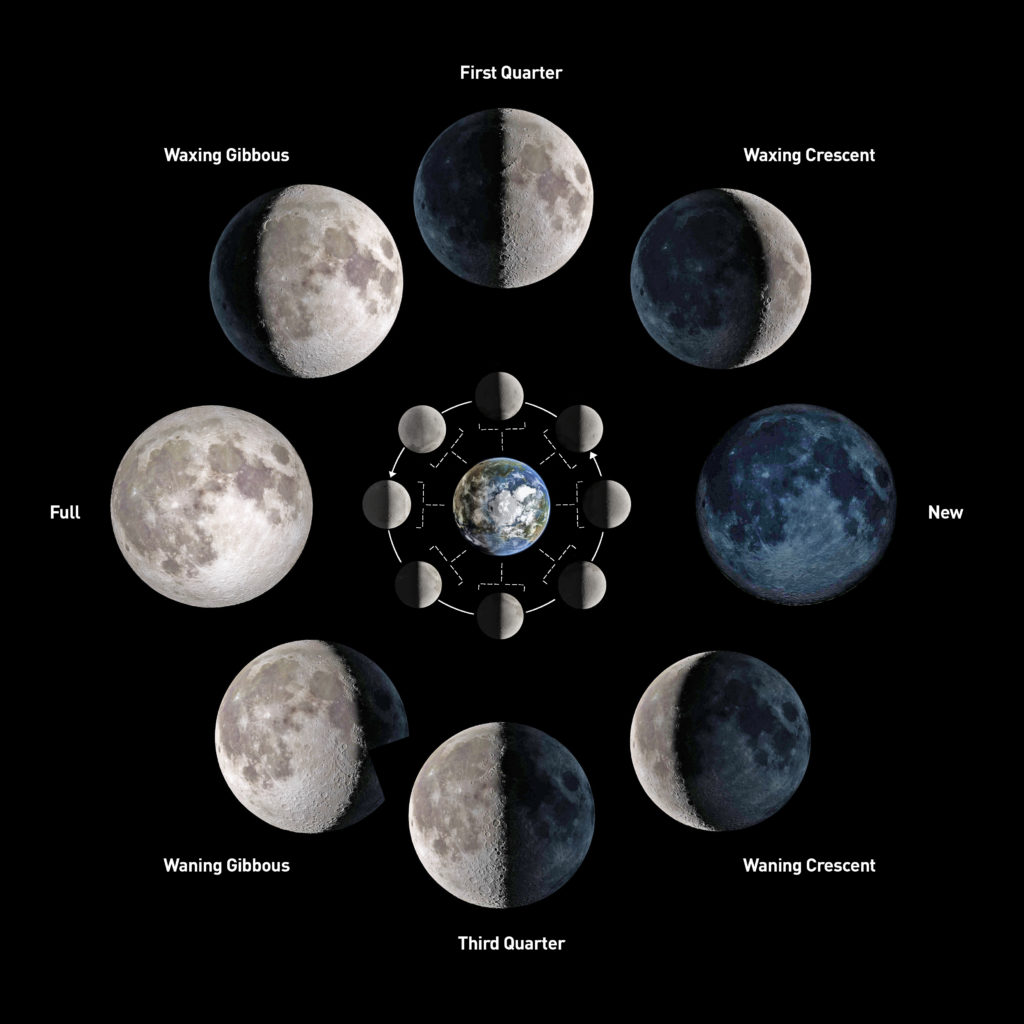
Phases of the Moon Activity Ideas
Chalk Academy has some lovely moon phase water colour paintings.
A popular way to demonstrate moon phases is with oreos.
Happy Tots Shelf has a fantastic moon phase learning toy.
We made moon phase cupcakes using chocolate cupcakes and ready to roll icing. The first and third quarter should have been a bit neater, but for a first try they worked pretty well!
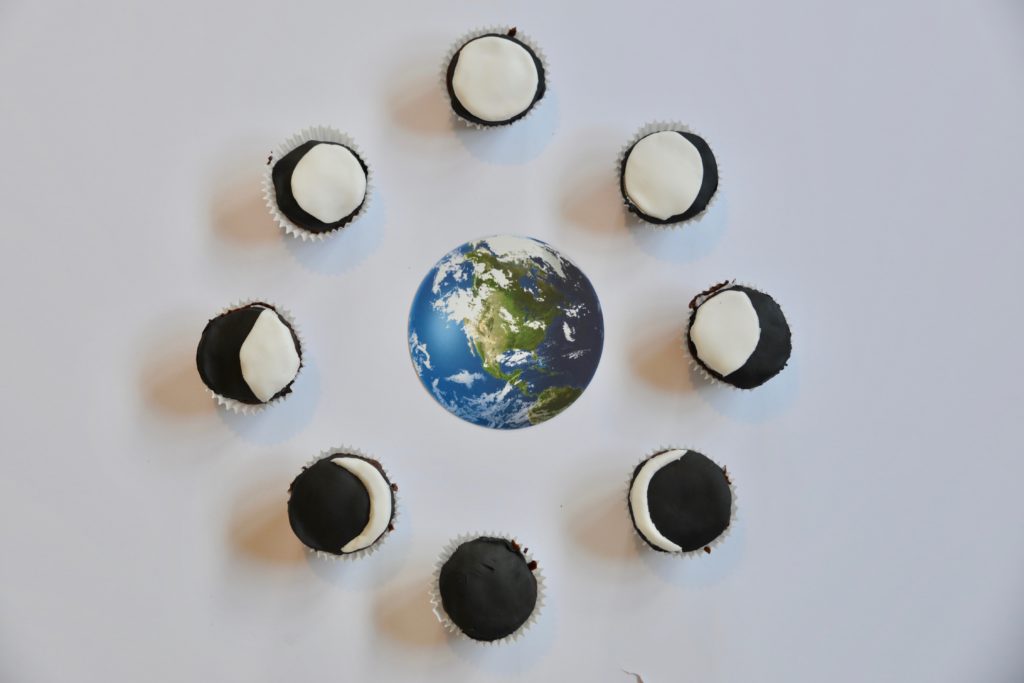
What is the lunar calendar?
The lunar calendar measures time using the moon’s phases, whereas the solar calendar uses the Earth’s orbit around the sun. A lunar month is shorter than a solar month, so the lunar calendar doesn’t fit our traditional year, leaving us 12 days short.
Why do you never see the far side of the Moon?
Only one side of the Moon can be seen from Earth, as the Moon rotates at the same rate that it orbits the Earth, this is called tidal locking.
Activities for learning about the moon
One fun way to learn about the moon’s phases is to keep a moon phase log over a few weeks and watch how the moon’s shape changes.
Note the date, time, and sky condition and sketch how the moon looks each day. Try to make your observations at a similar time.
Find out how craters are formed by dropping marbles into flour and cocoa powder.
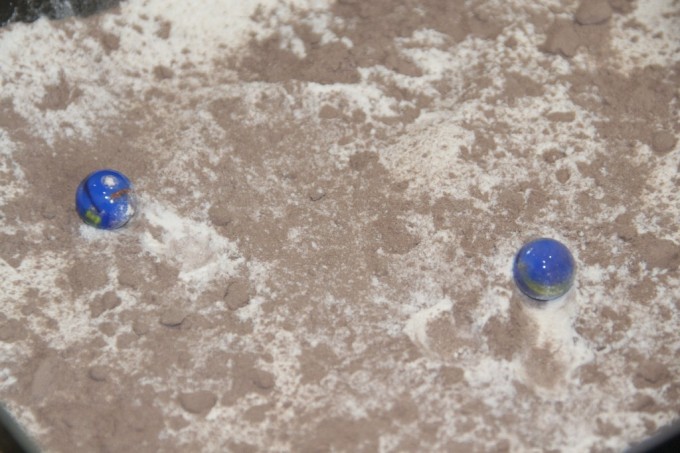
Do you know what a moonquake is?
Did you know rainbows form on the moon?
I have lots of other easy space science experiments you might like too!

Science Concepts
- Moon phases
- Space
- Lunar Calendar
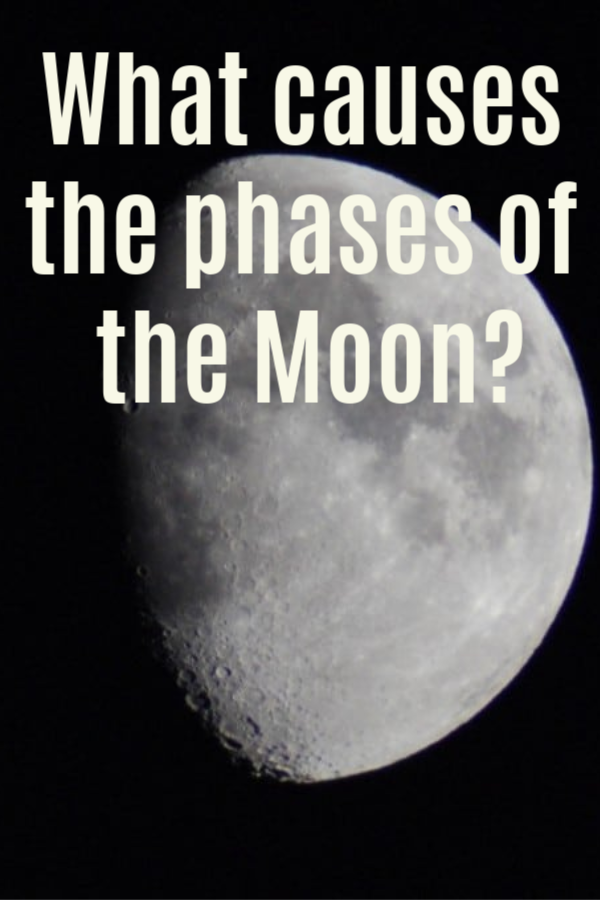
Last Updated on February 27, 2025 by Emma Vanstone


Leave a Reply